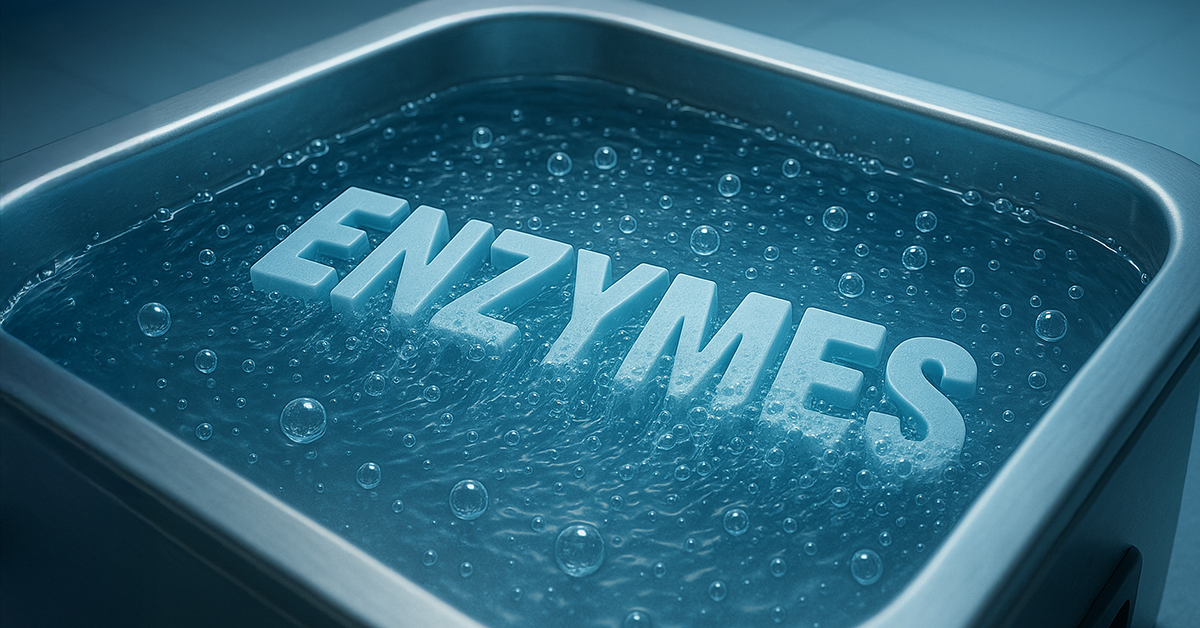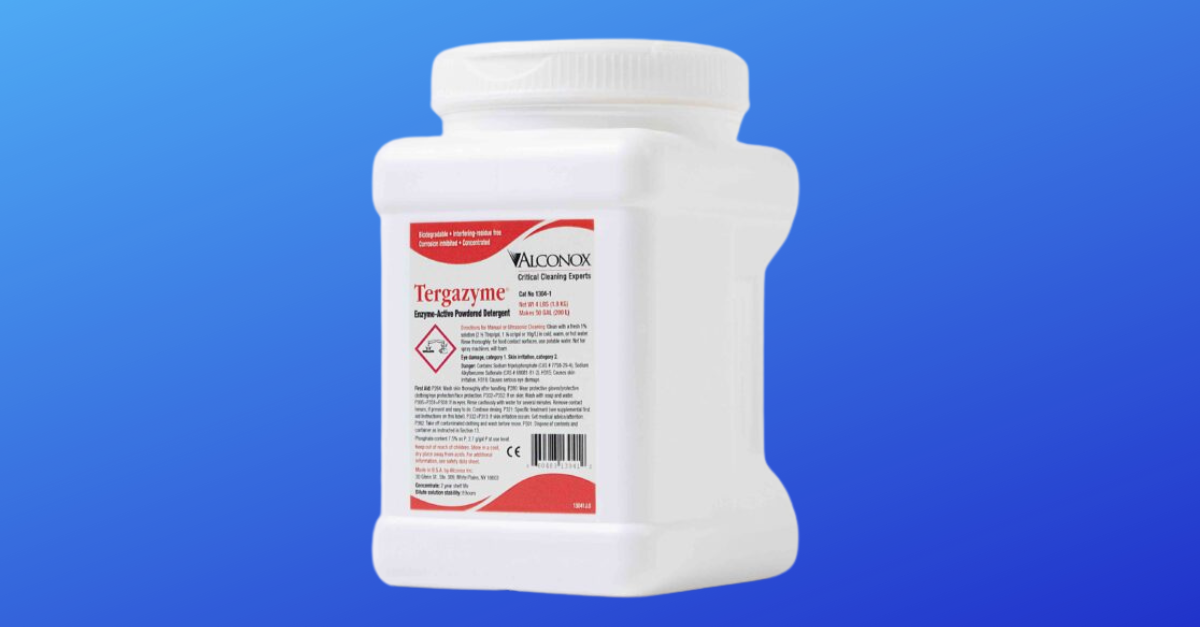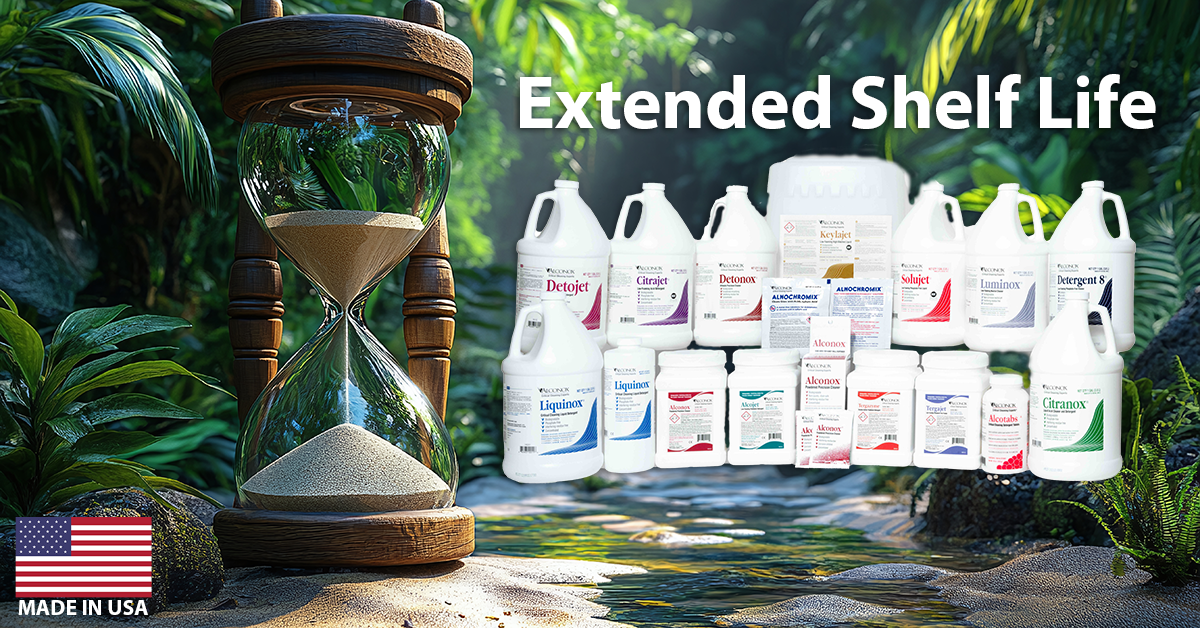
Q. How can I clean proteins, RNA and DNA from laboratory equipment?
A. Thank you for your question concerning cleaning proteins, RNA and DNA from laboratory equipment.
I will address each separately as the best way to clean proteins, RNA and DNA would be three separate methods :
1) For the removal of protein our recommendation is Tergazyme® Enzyme-Active Powdered Detergent. This detergent contains a protease that is excellent for cleaning of proteins, tissue, and body fluids from glass, metals and plastics. It has been used to clean filter membranes, fermenters and bioreactors. It is designed for manual, soak, and ultrasonic cleaning methods. With proper rinsing, it leaves no interfering residues on the surface. Use at 1-3% (in solution it is stable for 8 hours). pH 9.5.
2) We have two recommendations for the removal of RNA from laboratory equipment. First requires adding bleach hypochlorite to 1-2% Alconox® Powdered Precision Cleaner. Alconox powder is ideal for manual, soak, and ultrasonic cleaning of glass, metal, and plastic that leaves no interfering residues when properly rinsed. Alternatively, 1% Alcojet® Low Foaming Powdered Detergent or Tergajet® Low-Foaming Phosphate-Free Detergent can be used. Alcojet and Tergajet detergents contain active oxidizing compounds, so there is no need to add bleach.
Alcojet and Detojet cleaners are low foaming, powdered detergents that can be used manually, in ultrasonic tanks as well as in labware and machine washers. It is corrosion inhibited for glass, metal and plastic and when properly rinsed, leaves no interfering residues. In either case, Alconox +bleach or Alcojet/Tergajet alone, there needs to be cleaner – surface contact time that you will need to determine. From literature sources, it seems that alkali can hydrolyze RNA down to mononucleotides, but the alkali needs to come in contact with the surface for at least 8-16 hours to ensure hydrolysis is complete. This can be accelerated as the temperature of the solution is increased, as overnight at 37 C or 1-2 hours at 65 or 75C. Recall the Alconox, LLC rule of thumb is that cleaning time is halved for every 10C you go up in temperature.
3) Since DNA is stable to alkaline hydrolysis, we recommend testing 1-2% Citrajet® Low-Foam Liquid Acid Cleaner/Rinse, pH 2.5. Acids at high temperatures are capable of breaking the DNA molecule into its components. Citranox® Liquid Acid Cleaner and Detergent is a liquid acid cleaner for manual, soak and ultrasonic cleaning. It is corrosion-inhibited for glassware, metals, and plastic. It has rinse aids that leave no interfering residues on the surface.
As a side note, do not add bleach to Tergazyme powder, as it will denature the enzyme and render it inactive. Empirical data shows in fact the enzyme in Tergazyme detergent will be inactivated within seconds to exposure of 300 ppm hypochlorite, and within 2 minutes to exposure of 3.5 ppm hypochlorite at 100F (37C). Thus, it is not recommended to add bleach to a Tergazyme solution.
Also, do not mix bleach with our acid cleaners, Citranox or Citrajet, because in sufficient quantities the mixture can form toxic chlorine gas, as they can acidify the bleach solution to below pH 7. It is certainly not recommended to add hypochlorite to Citranox or Citrajet liquid detergents.
Finally, as noted above, there is no need to add bleach to Alcojet/Tergajet, as they already contains an active chlorine compound.
In all cases, proper rinsing with water is required. If rinsed appropriately, there will be no interfering residues left behind from the detergent.
Since we understand how important it is to have clean laboratory equipment, and understand that any “leftover” proteins, RNA and DNA could potentially contaminate your next experiment, we suggest that you analytically test for removal of these substances. We can certainly assist in that regard.
For further information please do not hesitate to contact us.
To request these or another Alconox, LLC product for free, please complete the questionnaire at Get Sample. For more information about any one of our Alconox, LLC detergents, consult the technical bulletin for each product. Or click here to access each of our detergent’s Safety Data Sheets.
Do you have a critical cleaning question for the experts at Alconox, LLC? Search TechNotes to see if it’s been answered before or Ask Alconox.



